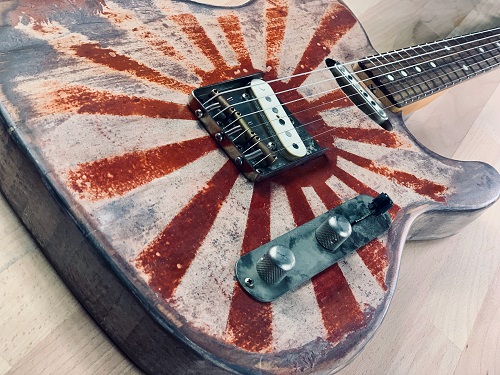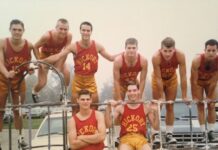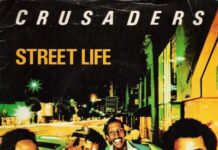Late in 2021, revered Japanese label Nippon Columbia released a compilation album entitled TOKYO GLOW, which explores city pop, funk, and soul from Japanese artists recorded in the late 1970s and 1980s.
Per Tokyo-based DJ and music curator DJ Notoya: “There are many city pop compilations out there already, but I still felt there was a lot of stuff from Japan that was being slept on and I wanted to introduce more of this music to the world — not just on vinyl but via playlists on Spotify and Apple Music. I wanted to show there was more depth to music from Japan from the 1970s and 80s.”
After listening to the album (and its apparent Western musical influences) with some regularity, this got me thinking – if the West could successfully imbue its unique style and instrumentation into the heart of Japan and its music, what about the other way around? When had Japanese culture and influence made its way into the pop and rock music sensibilities of the West?
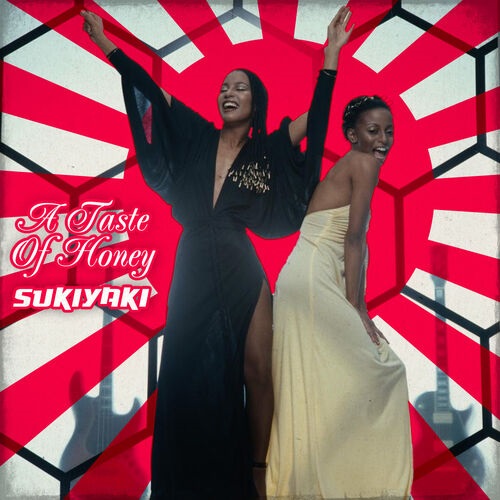
You could claim that the answer to this question lies nearly 60 years ago with singer Kyu Sakamoto. In 1963, he would become the first Japanese artist to score a Number One hit on the Billboard Hot 100 with the ballad “Sukiyaki.” Fast forward 18 years later to 1981 and the plaintive tune would experience a commercial resurgence when Grammy “Best New Artist” winners A Taste of Honey (of “Boogie Oogie Oogie” fame) would apply English lyrics to the track as well as a distinctive Japanese element — authentic koto playing (courtesy of musician June Kuramoto). The collaboration would yield the group’s second biggest hit, which would peak at Number Three on the Hot 100.
“[Producer George Duke] said, ‘I got these two young girls and they’re doing R&B pop but they got it in their head of doing an anglicized version of ‘Sukiyaki’. He says, ‘This is never going to work unless June comes up with koto parts for the song and puts it on the record,’” recalled June’s former husband Dan Kuramoto, a founding member of pioneering jazz fusion band Hiroshima. “She did it in a quick session and it tuned out to be a huge hit. It’s a curious crossover that the next version was an R&B pop hit but it was very cool. We dug the cultural diversity of it.”
Going back to the concept of Japanese bands and musicians bringing their own distinctive style and sounds to the West, there are a few key standouts I’ve had on repeat the past couple of years that warrant greater listens. Bear in mind these represent only a microcosm of the overall great pop and rock music Japan has to offer (as exemplified in the aforementioned TOKYO GLOW):
- Let’s start with Japanese keyboardist/synthesizer whiz Jun Fukamachi. When it comes to this jazz fusion maestro, I can say that there are two core works of his that stick out the most in terms of individualism. First there’s 1977’s Pepper’s Lonely Hearts Club Band, a solo piano workout that replicates the Beatles’ seminal release of the same name. And then there’s 1980’s Quark, a four-movement synth masterwork that infuses the best of modern experimentation with Japanese aestheticism. The album’s lead-off title track alone is the stuff of symphonic virtuosity as Fukamachi’s fingers fly all over the instrument, changing emotion and tone at unexpected times and in unexpected ways.
- Next comes noted Japanese percussionist Stomu Yamash’ta, who in addition to his own solo work made a name for himself by aligning with singer Steve Winwood, maestro guitarist Al Di Meola, and Santana drummer Michael Shrieve to form the supergroup Go. Ethereal in their musicality yet capable of rocking as hard as their contemporaries, Go would only last for two studio albums. However, band tracks like “Crossing The Line” and “Ghost Machine” are essential listening as Yamash’ta’s moody background instrumentation lays the foundation for each musician to shine. But listeners also need to go back a bit further to Yamash’ta’s solo work, especially 1975’s Raindog, where he’s running more of the show. This album is particularly terrific for its inclusion of noted singers Murray Head and Maxine Nightingale who each translate the composer’s ideas into something that’s dubbed as jazz but really isn’t.
Adds Dan Kuramoto: “Stomu Yamash’ta, he’s really an interesting cat…he did the most extraordinary projects. By definition, the people you call giants — they considered Stomu a giant. It was their desire to play with Stomu. Stomu was breaking boundaries all the time. He loved orchestrations, he loved symphonies, he loved rock. He was passionate about things in real-time which I thought was so cool.”
- Next, we move on to Japan’s undeniable answer to Kraftwerk, the dynamic trio Yellow Magic Orchestra (YMO). Driven by acclaimed composer Ryuichi Sakamoto, the band would transform Japan’s definition of popular music into accessible pop staples for global audiences. Just watch their breakout 1979 show at the Greek Theatre in Los Angeles where their mix of disco beats and spacey synthesizer notes resonate strongly with American audiences. Tracks like “Computer Game,” “Behind the Mask,” and arguably the group’s most popular song “Rydeen” encapsulate the most definable elements of Japanese culture, with rarely any words needed to convey this mentality. Their stage presence would be equally enigmatic.
Per Fee Waybill of The Tubes: “I think they opened for us in San Francisco at the Kabuki Theater, which was a theater in Japantown. They were great, except they didn’t speak English … But they were really cool. I thought they were really great.”
- Lastly, let’s not forget that glorious heavy metal moment in time when Japanese group Loudness blasted onto the airwaves with their Top 75 1985 album Thunder In The East and its standout lead-off track “Crazy Nights.” While we still may not know exactly what “M-Z-A” means or stands for, this was proof that Japanese musicians could exude their own flair in a genre that came to dominate a decent chunk of the 1980s. While this embodies more of the West influencing Japanese musicians; you could argue that once this group came on the scene, it opened up metal as a universal movement.
***
“We were the all-American band — We just happened to have a koto player.”
Even though they are concluding their final tour as a group this year, Hiroshima’s place in popular music is well-assured. Comprised of third-generation Japanese Americans, the band, which encompasses 17 studio albums, is unique for its extensive usage of Japanese instrumentation in its jazzy, vibrant compositions. Selling millions of records worldwide, the band has also toured during its tenure with such icons as Miles Davis.
“The band lived in concept, not much unlike Talking Heads. It was an art school band,” Dan Kuramoto, the group’s vocalist, keyboardist, flautist, and saxophonist, told me. “We were not great musicians, but we were really committed. Our intention was never to replicate what everybody was doing. We did 20-minute-long songs; massive amounts of improvisation. It’s a kind way of saying, ‘We have no idea what we’re doing.’ We would try to be honest to who we were. Beyond that, we didn’t give a shit. If you didn’t like us, that’s cool. If you didn’t like the name, that’s cool.”
Helping to further differentiate the band while also giving it its core performance sound on was koto player June Kuramoto.
“The koto, it’s much too complicated. It’s 13 strings with 13 moveable bridges. How do you play in tune with fixed diatonic instruments? You need absolute perfect pitch and to be able to tune while playing,” Dan Kuramoto, June’s former husband, told me. “She can stay in tune because she can play complex music passages and retune while she’s playing in real time. She wants to make koto part of the American music lexicon.”
“Stanley Clarke has played with everyone and he said, ‘Without question, this is the world’s greatest koto player’,” he adds.
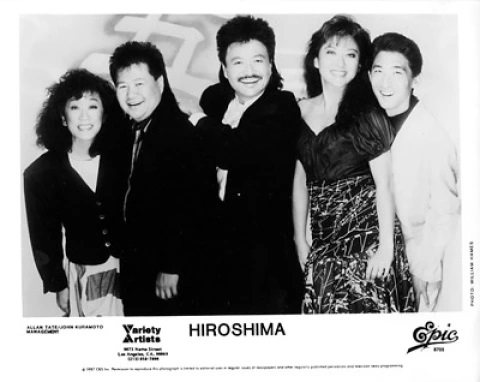
Driven by their multicultural upbringings, band members — which now total five — would receive Grammy nominations and gold records alike. However, record label love didn’t happen immediately once the group shopped for a deal.
“When we were approached ultimately to sign…a top record exec said, ‘This is the only situation you’ll face where you may wish you were black.’ It’s a rat race in the music industry,” Kuramoto said. “But we’re going to do it the way we want to do it. We’re going to do things that hopefully people can connect to so we can just represent. Our intent was never to worry about huge levels of success.”
Next year marks the 40th anniversary of one of the group’s strongest albums, Third Generation. Though upbeat, harmonious, and meticulously produced, the process of making this work didn’t necessarily follow that same trajectory, according to Kuramoto.
“Third Generation was our first project for CBS Sony. They did everything they could do to kill Third Generation,” Kuramoto said. “With ‘San Say,’ which means ‘Three Generations,’ the whole intention was to depict us the way we are. The issue with videos was they wouldn’t play us because we were Asian. MTV was interested in us because we were selling a lot of records.”
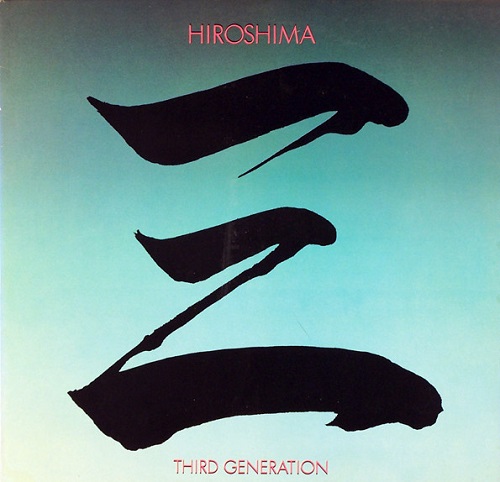
It would be “San Say” that arguably best introduced Hiroshima visually to the music listening world. One of the album’s many standout tracks, other highlights include opener “Heavenly Angel,” which sounds straight out of Japan regardless of its English lyrical phrasing; the slow tempo “Do What You Can;” the koto-laden “Distant Thoughts;” the funky, bass-driven “From the Heart;” and “We Are.” On this track, the guitar lick sounds uncannily like the lead guitar riff for Bruno Mars’ and Mark Ronson’s monster hit “Uptown Funk.”
Coincidence or influence – I’ll let you decide. Either way, it’s abundantly clear that Japan’s influence permeates far and wide across American musicality.
“What we do has always been curious to me,” Kuramoto says. “We wanted to touch into the universality of the fact you could have koto in a band and everyone could still relate to it. That’s the American dream, isn’t it? Even if we were left out, we can still create a path to inclusion.”
Learn more about Hiroshima’s upcoming gigs at Hiroshima Music.
***
Share your feedback and suggestions for future columns with Ira at vinylconfessions84@gmail.com. Ira’s new book, “Hello, Honey, It’s Me”: The Story of Harry Chapin, is available for purchase here.


